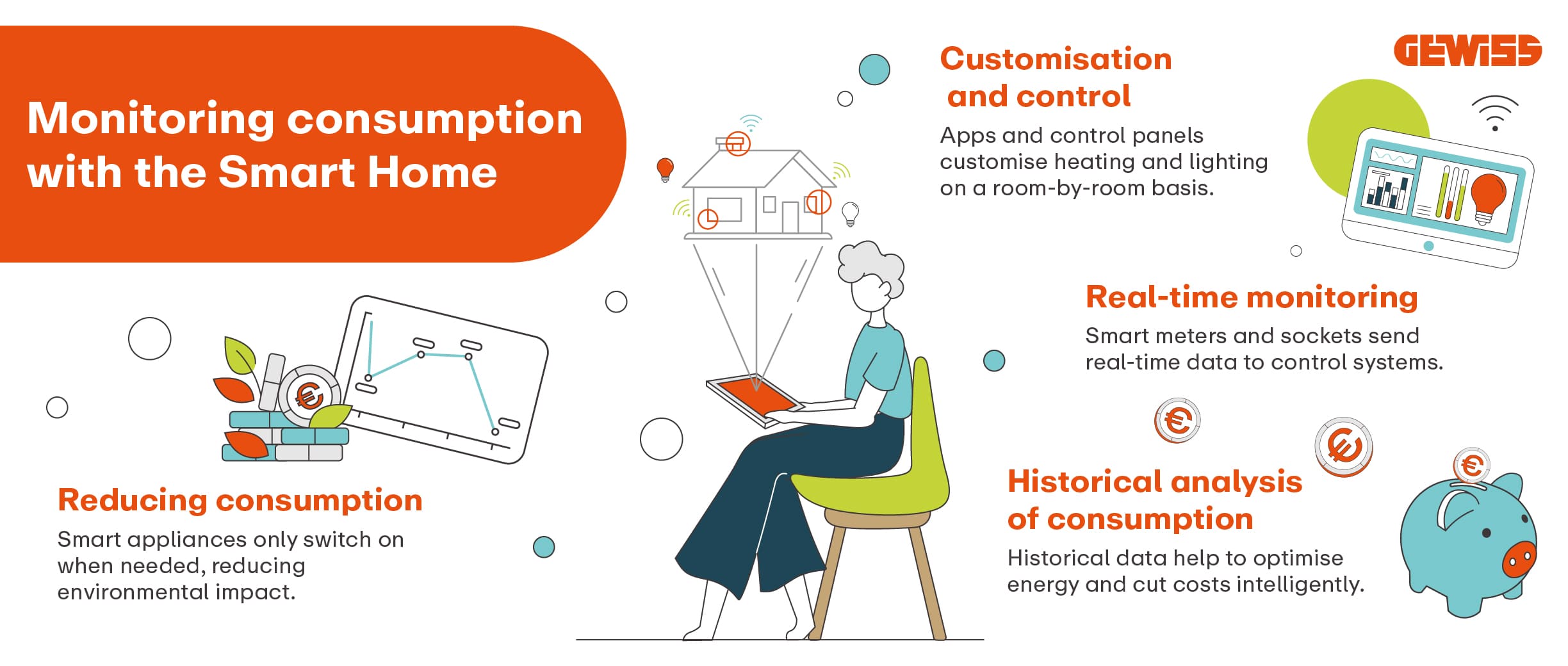
Installation
Installation
The heart of the GEWISS offer is represented by the energy connection, distribution, derivation and transport systems. A complete range of innovative products Made in Italy, designed to create plant solutions that satisfy any installation need.

Energy
Energy
A state-of-the-art energy management and protection system. Maximum synergy and integration between modular and boxed equipment, switchboards and distribution cabinets.

Building
Building
Safety, comfort, energy saving, supervision and design. These are the keywords to describe the entire GEWISS system for Smart Home & Building.

Lighting
Lighting
Light quality and smart lighting systems provide the best planning solutions of Italian design, giving life to an offer that contribute to the well-being of people and the environment.


Mobility
Mobility
JOINON is our turnkey solution for those who choose GEWISS sustainable mobility.

We create connections between people and objects.
We create connections between people and objects.
We selected nine applications where our proposals can be inserted in harmony with the needs of each reality and type of stakeholder.

Do you need technical or project consultancy?
Do you need technical or project consultancy?
GEWISS experts are available to the web community to provide free technical support. The service is at your disposal both to provide you with support in the drafting of projects, and to offer advice on already structured projects.

One of the undeniable advantages of smart homes is the monitoring of electricity consumption in real time. With the right combination of home control devices, you can obtain benefits in home energy efficiency together with considerable savings, without compromising the comfort of the spaces and the occupants.
Home automation devices to monitor consumption
In a smart home system, all connected devices can contribute to creating savings and reducing the environmental footprint. This can be done, for example, through alerts during peak consumption times, or by activation only when the photovoltaic system has a higher output.
Electricity consumption meters are one of the key tools in home automation systems. They have the great advantage of wired connection to an existing electrical panel or wireless connection to communicate with smart devices around the home, requiring less obtrusive installation solutions.
On the subject of unobtrusive methods of monitoring electricity consumption, smart home appliances can self-monitor and communicate via standard protocols, with no need for a wired data exchange. Similarly, smart sockets assist “traditional” household appliances by collecting their data and sending it to the system.
How can we view the collected data? Here too, the options offer great flexibility. The wall-mounted control panels offer constantly updated consumption readings and are available in several designs that fit in with any furnishing style. To monitor from wherever you are and to customise the functions , you can simply use the apps, which offer the same functions but in wireless mode.
The apps and control panels for monitoring the electricity consumption and indoor temperature of the home offer a wide range of customisation options, such as switching on appliances in the cheapest consumption bands and avoiding overloads that can interrupt the power supply, as well as setting heating and lighting profiles on a room-by-room basis.
A room not in use can be left unheated, while another that is only occupied during the day can have the lights set to a lower wattage than areas occupied in the evening.
A connected smart home also allows thermostats to beconnected to the system via the most popular voice assistants, so that you can check the current data with a simple voice-activated request.
Finally, the data storage functions provide the possibility of keeping a long-term consumption record.

How to make the most of consumption monitoring
What is the point of collecting data through a smart home monitoring system? Smart sockets and household appliances, alerts, consumption history and wireless functions are all you need to start saving on electricity and to develop greater awareness of the energy needs of your home.
With the data and the right devices, you can gain a thorough understanding of the time bands in which you consume most and then seek an energy supply that suits your needs.
Identifying waste and adopting technological, practical and comprehensive solutions to cut unnecessary costs - perhaps through the addition of solar panels or heat pumps - helps make a positive impact on utility bills and on the environment, to help face rising energy costs and the increasingly important focus on energy requirements.
Share
Related articles






Show other categories
Write to us
Do you need information on Gewiss products or services?
A new home for the Lighting catalogue!
This product is no longer hosted on this website. It can now be found at PERFORMANCE iN LIGHTING | Powered by Gewiss: Go to the website
A new home for the Lighting catalogue!
This product is no longer hosted on this website. It can now be found at PERFORMANCE iN LIGHTING | Powered by Gewiss: Go to the website
Wishlist Management
Operation occurred correctly
Attention – an error has occurred.
Privacy Policy
The privacy policy has been updated. Please review and provide your consent again. Thank you
File download
Access to the “My Gewiss” area is required to download this content
You can enter the Gewiss world by consulting the sites available for each country, differentiated by language, services, and catalogue offerings
Choose your country
You are entering the site:
International - EN
GEWISS World websites are available for each country, differentiated by language, services and catalogue offerings.
Do you want to change country?























